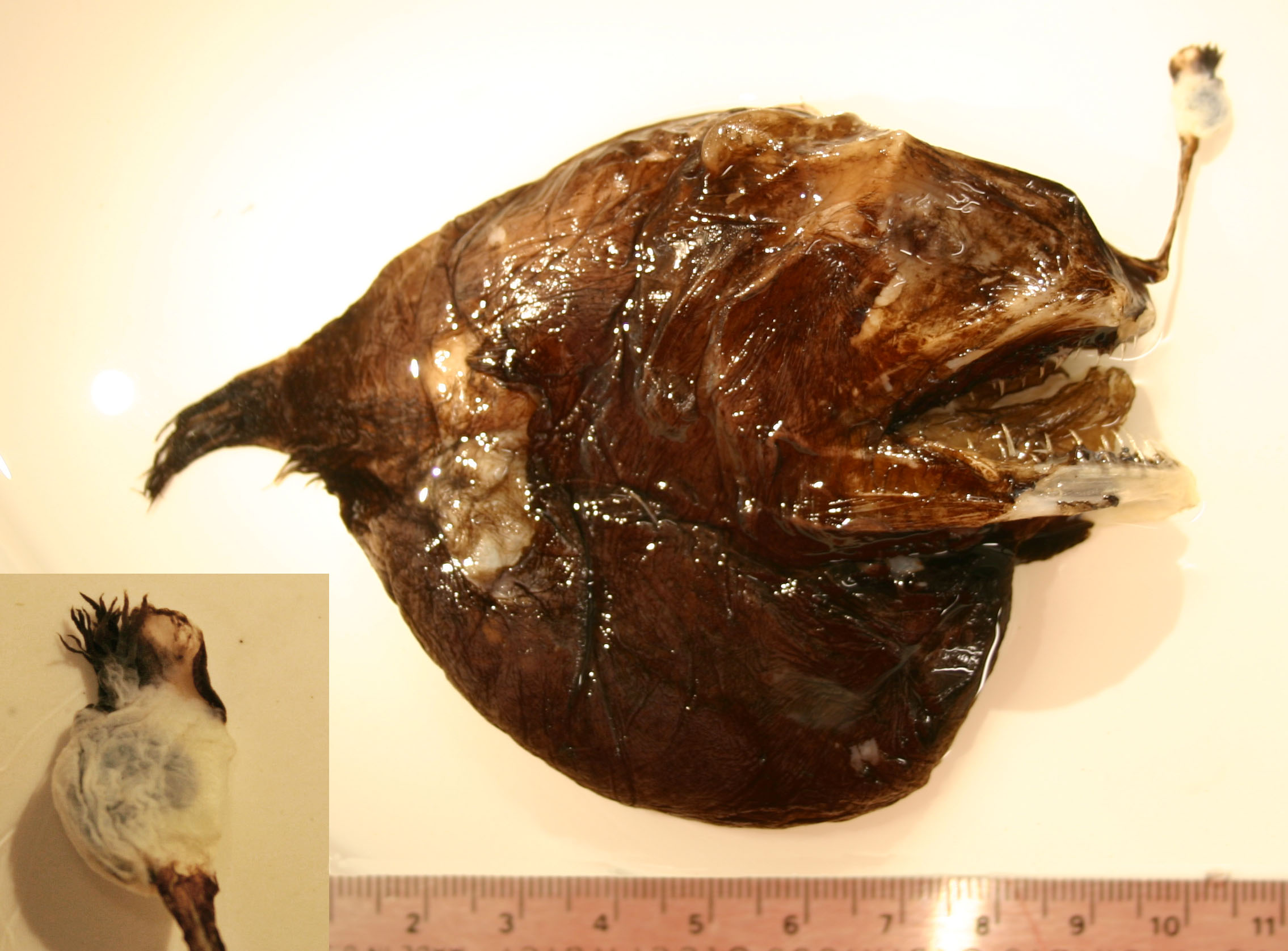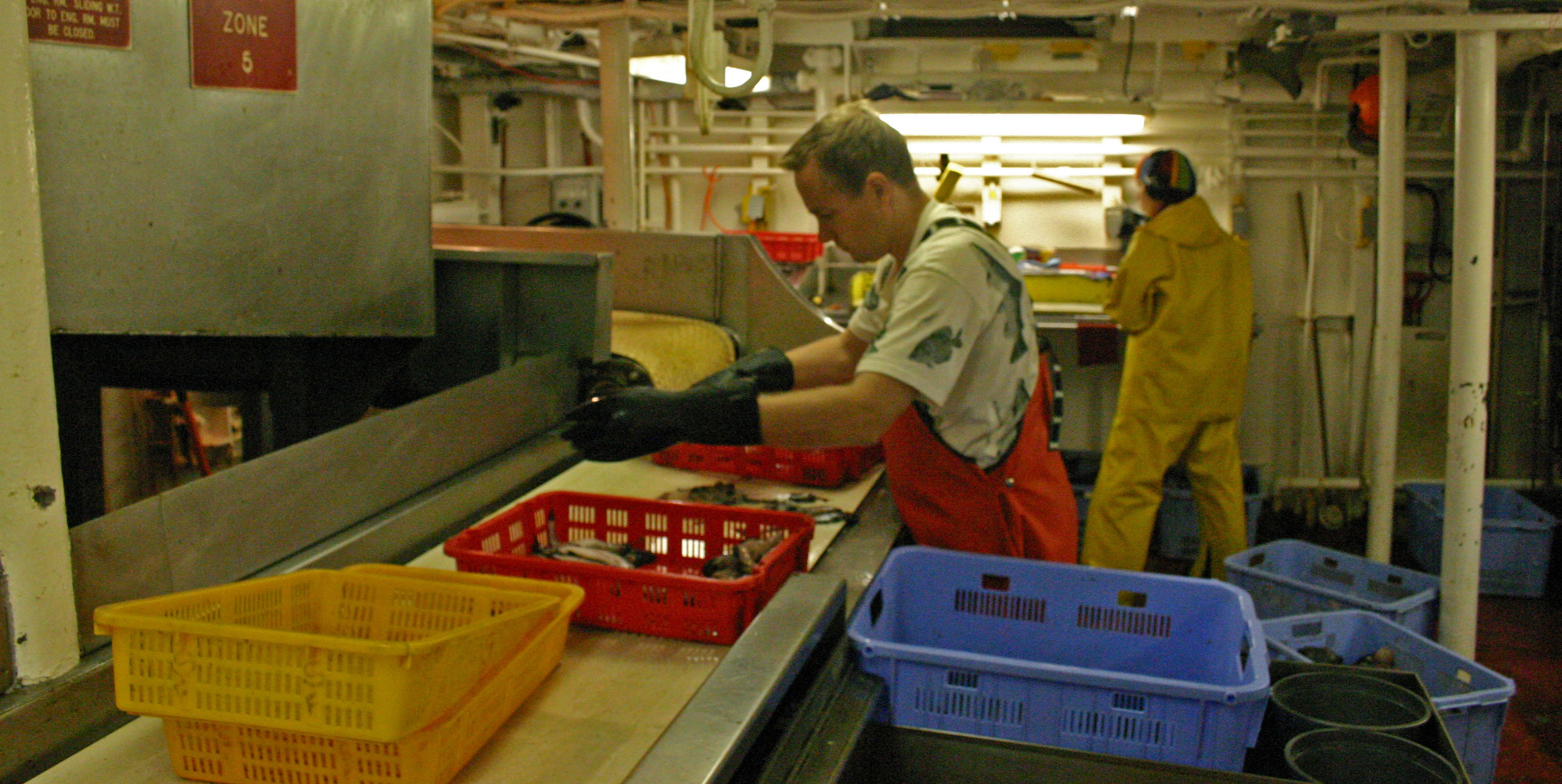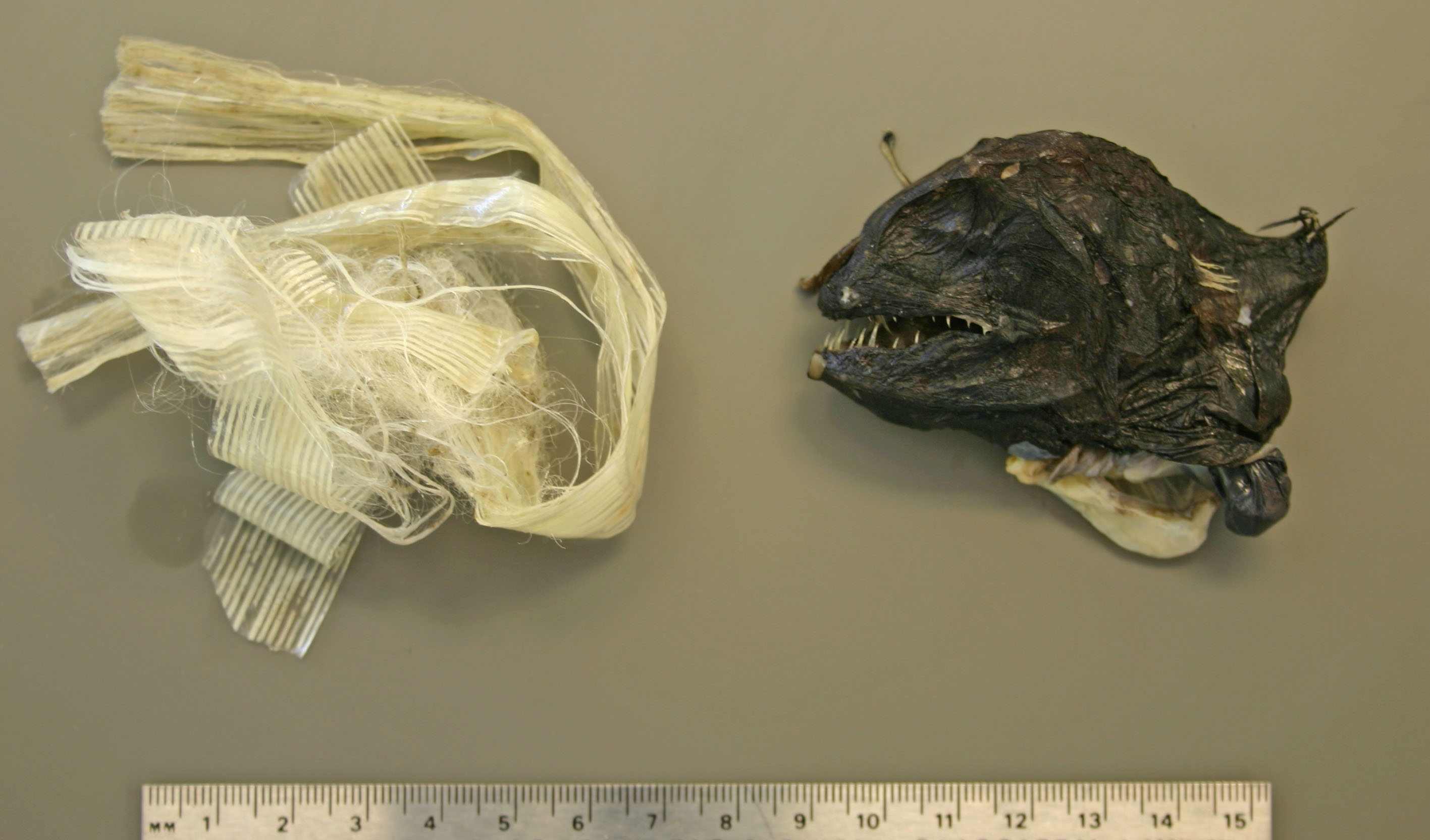Today my student Jake finished his research paper on Dreamers, Black Seadevils, and Deep-sea Anglers. The paper has been submitted for publication in the scientific journal Northwestern Naturalist. These fishes rival anything in science fiction, with their black flabby globular bodies, huge mouths lined with needle-like teeth, and a glow-in-the-dark lure (the official name for the flashy tip of the lure is an esca).
Chaenophryne longiceps (RBCM 998-00344-001) – with its esca as an inset image. This fish’s esca has tiny anterior filaments compared to others of the species.
These fishes were taken using a trawl net during survey samples from 1999 and 2006. Four of the fishes were known to exist in BC (Oneirodes thompsoni, Oneirodes bulbosus, Oneirodes eschrichtii, Oneirodes acanthias) and the new records only served to fill gaps in each species’ range. Others however, are new to BC (Chaenophryne longiceps, Melanocetus johnsonii, and Cryptopsaras couesii), or had been here a while in museum collections, but their records had never before been published (Chaenophryne melanorhabdus and Ceratias holboelli).
The nicest specimen of Ceratias holboelli with its prickly skin and elongate ilicium. A replica of this fish is available if you want a really bizarre fishing trophy for the living room.
Again, as with previous posts on deep-sea exploration, we are fiding new fishes because we have gone out to survey our waters. Deep-sea anglerfishes are sparsely distributed around the world, and have been here well before humans arrived, but finding one is a hit and miss proposition. Days where two appear in a single net haul are worth toasting, once work is done and you are relaxing on deck.
The Stout Werewolf (Melanocetus johnsonii) – a first for BC.
The esca – the glow-in-the-dark lure is the most commonly used feature to identify species. While it varies slightly within species, you just need to look at the lure to identify most. Identification is far more diffucult – sometimes impossible if the lure is torn off during capture. These fishes life hundreds of meters, to over 2 km depth, and they share their fate with many more fishes and a range of invertebrates – and so once they arrive on deck, they tend to have recceived a fair bit of damage. Most have split skin – some get completely skinned. Fins get damaged, and sometimes the esca and its support (ilicium) is completely gone. Yes it seems like a harsh way to sample and it is destructive to the sea floor – but if there was a better way to sample the deep-sea, we’d be doing it. Trawl nets are really the only practical way to sample large volumes of deep-sea habitat for scientific research.
The cod-end of the trawl net gets dumped into a hopper, and the fish spill to the sorting conveyor below the main deck (below).
What do you think is worse, working in the wind and rain on deck? Or below where it is warm, and smells of the ship’s engine room, seafloor ooze and fish, while the ship rocks and rocks…
One of the most shocking things about deep-sea fishes is their ability to eat large prey items. Gulper eels and Swallowers are renowned for their gastrointestinal capacity. One of the dreamerfishes caught in BC (a Southern Spiny Dreamer, Oneirodes acanthias) had a distended stomach, and out of pure curiosity, researchers cut the fish open – only to find a large wad of fiber packing tape. It reminds me of Albatross which collect plastic and feed it to unsuspecting hatchlings – we never know where our garbage ends up, and who it impacts. I wonder who threw that tape overboard? Even in the deep sea, wildlife has to contend with our refuse.
The Southern Spiny Dreamerfish (RBCM 998-00323-001) and its high-fiber meal.
We now know there are 9 species of deep-sea anglerfishes in BC, and one of the sea devils (the Tripplewart Sea Devil to be precise) is the northern-most record of that species in the entire pacific. Call me nerdy – but that is so COOL. I’ll leave the rest of the details on which species are where to the scientific paper. Keep your eyes out next summer for the paper when it goes to print.









